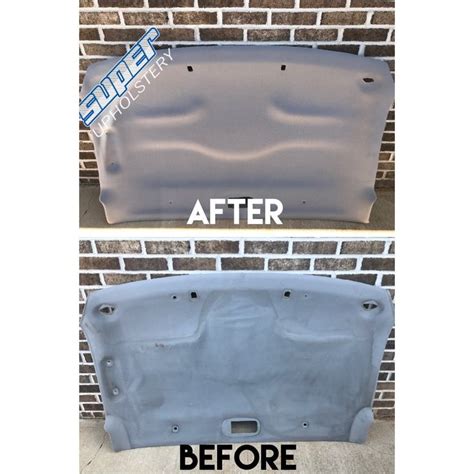Headliner Repair: Get It Done Right the First Time
A sagging, stained, or ripped headliner can dramatically detract from your vehicle's interior. It's a detail that many overlook, but a pristine headliner instantly elevates the overall look and feel of your car. Luckily, headliner repair doesn't always mean a costly reupholstery job. This guide will walk you through the process of headliner repair, ensuring you get it done right the first time. We'll cover various repair techniques, common problems, and how to choose the right solution for your situation.
What Causes Headliner Damage?
Understanding the root cause of your headliner damage is crucial for effective repair. Common culprits include:
- Sun Damage: Prolonged exposure to UV rays can cause the fabric to fade, become brittle, and crack.
- Moisture Damage: Leaks from the sunroof, windows, or even condensation can lead to sagging, staining, and mold growth.
- Physical Damage: Scratches, tears, and punctures from luggage, sharp objects, or even careless passengers are common occurrences.
- Age and Wear: Like any fabric, headliners eventually degrade over time, becoming loose and prone to sagging.
How to Repair a Sagging Headliner
A sagging headliner is often the most common problem. Before resorting to full replacement, consider these solutions:
- Spray Adhesive: This is a quick fix for minor sagging. Carefully apply a high-quality spray adhesive to the headliner board, ensuring even coverage. This method is best suited for slight imperfections and may not work for significant sagging.
- Headliner Repair Kit: Many automotive stores offer kits containing adhesive and possibly replacement fabric patches. These kits provide a more durable solution than spray adhesive alone, especially for small tears.
- Professional Headliner Installation: For extensive sagging or if you're not comfortable with DIY repairs, a professional upholstery shop can remove, repair, or replace the headliner. This is the most reliable option for ensuring a perfect result.
What are the common materials used for headliner repair?
Headliner repair frequently employs materials like vinyl, fabric patches, and specialized headliner adhesive. The choice of material depends on the extent of the damage and the original headliner material. Vinyl is durable and water-resistant, making it a popular choice. Fabric patches offer a seamless blend for smaller tears. High-quality adhesive is essential for a lasting repair, ensuring the headliner stays secure and taut.
How much does it cost to repair a headliner?
The cost of headliner repair varies widely depending on the extent of the damage, the chosen repair method, and whether you're doing it yourself or hiring a professional. Minor repairs with spray adhesive or a small repair kit may cost only a few dollars in materials. Professional headliner replacement can cost several hundred dollars, depending on the vehicle and the shop's labor rates.
How long does it take to repair a headliner?
The time required for headliner repair ranges from a few hours for a simple DIY fix to several days for professional replacement. DIY repairs can be time-consuming and require patience and attention to detail. Professional services typically complete the repair within a few business days.
Can I repair a headliner myself, or should I seek professional help?
Whether you should attempt a DIY headliner repair depends on your comfort level with automotive repairs, the extent of the damage, and the desired outcome. Minor sagging or small tears are manageable DIY projects with the right supplies. However, extensive damage, complex repairs, or the desire for a perfect, professional finish warrant seeking professional help.
Repairing Tears and Punctures
For tears and punctures, you'll need a more comprehensive approach:
- Patching: Small tears and punctures can often be successfully patched using a suitable fabric patch and adhesive. Choose a patch material that closely matches the existing headliner.
- Headliner Repair Kit (with patch): Kits specifically designed for patching often provide better results than just using spray adhesive and a separate patch.
- Professional Repair: Larger tears or significant damage may require professional repair or replacement.
Preventing Future Headliner Damage
Preventing damage is always easier than repairing it. Here are some tips:
- Protect from Sun Exposure: Park in shaded areas or use a sunshade to minimize UV exposure.
- Address Leaks Promptly: Repair any leaks in your sunroof, windows, or seals immediately to prevent moisture damage.
- Handle with Care: Avoid placing sharp objects or heavy items on the headliner.
By understanding the causes and potential solutions, you can successfully repair your headliner and restore your vehicle's interior to its former glory. Remember to choose the repair method best suited to your skills and the extent of the damage. For substantial damage, a professional may be the best choice for a long-lasting and aesthetically pleasing repair.

